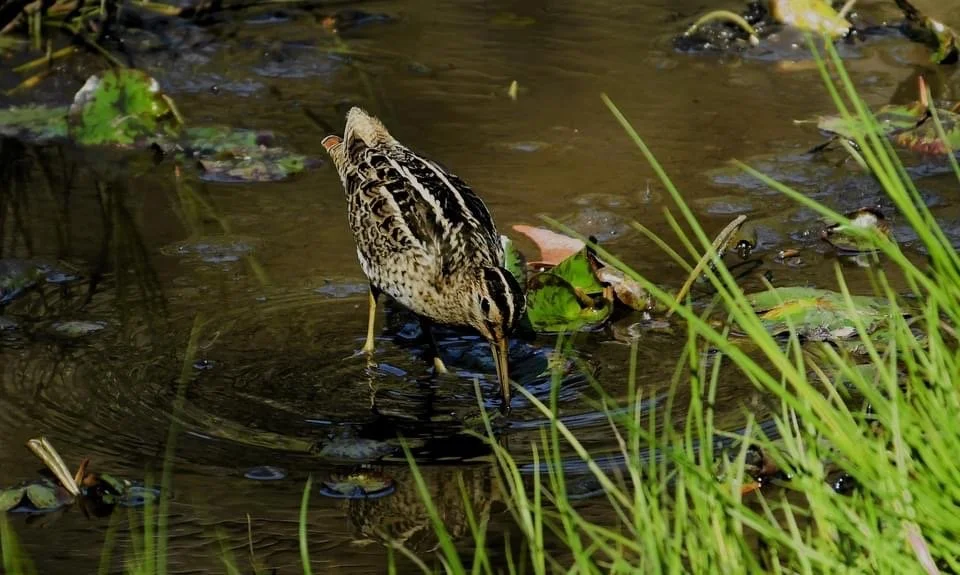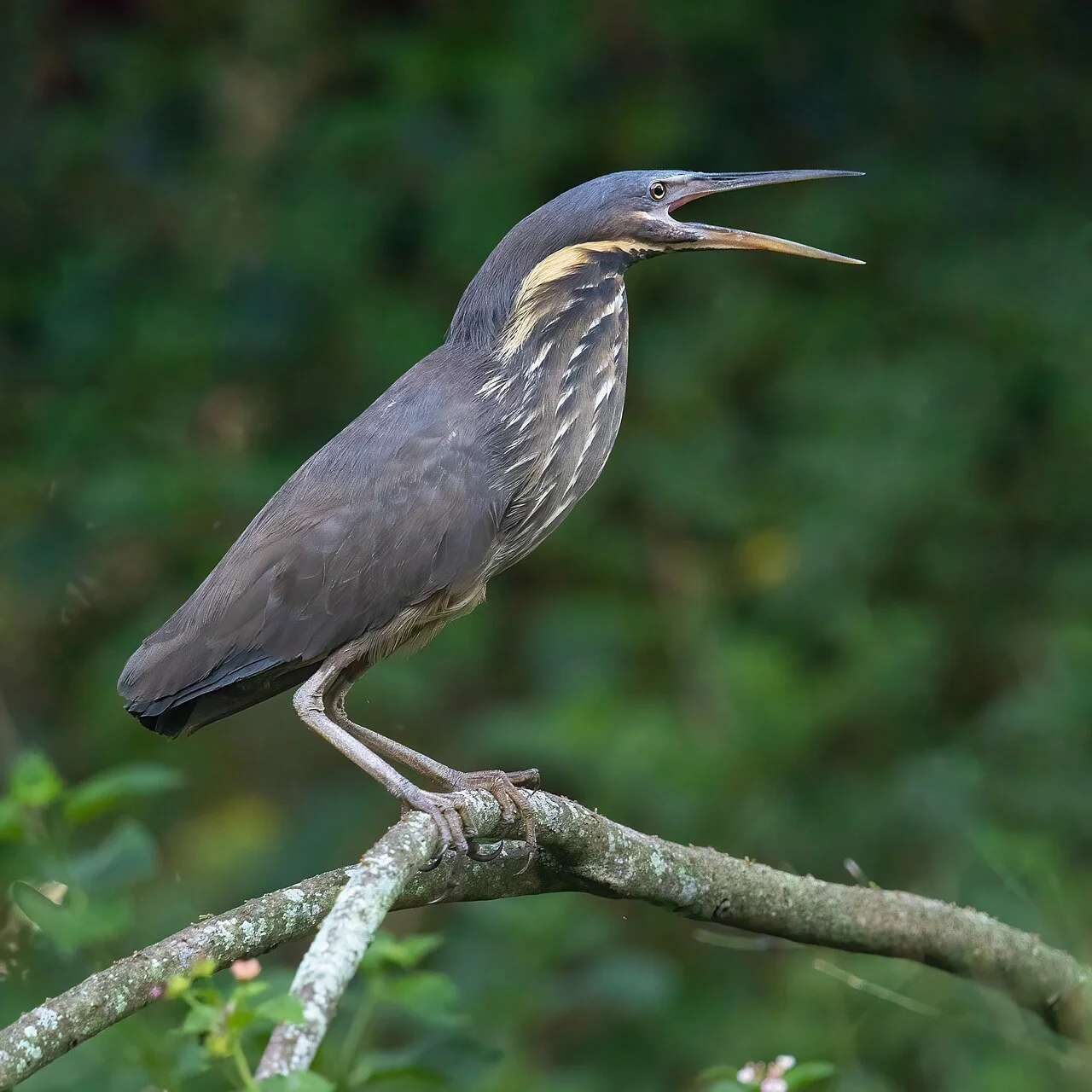Manly Dam’s Threatened Bird Species
Over ten species of birds found in the Manly Dam area is classified as Endangered / Vulnerable. Among them the most notable are the Powerful Owl, Glossy Black Cockatoo, Black bittern and the Swift Parrot all of which were spotted in the region over the last few years.
-
![]()
Regent Honeyeater
Species: Anthochaera phrygia | Status: Critically Endangered
The Critically Endangered Regent Honeyeater has become a flagship species for conservation issues in the box-ironbark forest region of Victoria and New South Wales. They are found in eucalypt forests and woodlands, particularly in blossoming trees and mistletoe. It is also seen in orchards and urban gardens. The Regent Honeyeater has striking black and yellow plumage and is very distinctive from other honeyeaters.
(Source: BirdLife Australia; Image © Verokina Grether)
-
![]()
Latham's snipe
Species: Gallinago hardwickii | Status": Vulnerable
This is a medium-sized, long - billed, migratory snipe of the East Asian–Australasian Flyway.
The snipe breeds mainly in Hokkaido in northern Japan. The entire population migrates and spends the non-breeding season principally in eastern Australia, where it is the commonest Gallinago snipe. Internationally, Latham's snipe is considered to be a near-threatened species. In Australia, it was formerly hunted as a gamebird but is now fully protected and, following assessment in the 2020, is listed as "vulnerable" under the Australian EPBC Act.
Photo @ Unknown
-
![]()
Powerful Owl
Species: Ninox strenua | Status: Vulnerable
Powerful Owls are Australia’s largest owls growing to 60cm tall with an impressive wingspan of up to 140cm. It occurs east of the Great Dividing Range, from SE Queensland to South Australia, mostly in large patches of forest. Despite being classified as vulnerable throughout its range, the Powerful Owl can and does, survive within cities, particularly where bushland remnants are close by such as in Manly Dam. Powerful Owls need big, old trees for nesting and these are in short supply. They usually rest (roost) during the day among dense leafy foliage of trees and shrubs and so protecting this habitat is crucial. These are also top order predators, so protecting their food sources – possums, birds, flying foxes and even Christmas beetles is important. We know that car and glass strikes are the leading causes of mortality for these birds (with estimates in Sydney of 12% of the population dying each year this way).
(Source: BirdLife Australia; Image: ©Sarah Maddox)
-
![]()
Glossy Black Cockatoo
Species: Calyptorhynchus lathami | Status: Vulnerable
Glossy Black-Cockatoos mostly occur in eastern Australia, from SE Queensland to eastern Victoria. A colloquial name for the species is the Casuarina Cockatoo, and this arises from the birds’ preferred food: the seeds of the casuarina tree. They strip the seed pods from the tree, then tear them open with their strong bills to extract the seeds.
The Glossy Black-Cockatoo mates for life, with pairs maintaining their bond all year round. The female prepares the nest hollow and incubates the eggs, only leaving the nest to feed herself after the newly hatched nestling is a week old. Males feed the female and nestling throughout the incubation and brooding period.
Many Dam has a number of groves of casuarina trees these cockatoos feed in. These birds also need tree hollows to rear their young in highlighting the importance of protecting habitats that provide both food trees as well as 100+ year old trees to provide nesting hollows.
(Source: BirdLife Australia)
-
![]()
Black Bittern
Species: Ixobrychus flavicollis | Status: Vulnerable
Black Bitterns are found in coastal south-western, northern and eastern Australia. Black Bitterns roost and nest in trees, and are found in tree-lined wetlands and in mangroves. They forage in both daylight and darkness, mainly from shady trees over water, but may be seen during the day in open areas of short marshy vegetation and along creeks in shrubby vegetation. Manly Dam with it’s creeks and thick foliage offers an ideal habitat.
(Source: Australian Museum | Image: © JJ Harrison)
-
![]()
Swift Parrot
Species: Lathamus discolor | Status: Critically Endangered
The Swift Parrot is a species of broad-tailed parrot, endemic to SE Australia. The species breeds in Tasmania during the summer and migrates north to SE mainland Australia. It is a nomadic migrant, and it settles in an area only when there is food available, including suburban parks. Long-term monitoring shows that the Swift Parrot population is in a perilous decline.
The primary cause for the dramatic decline in Swift Parrot numbers has been the historic and on-going removal of habitat through commercial logging and hence it is imperative to protect spaces like the Manly Dam.
(Source: Wikipedia, BirdLife Australia; Image: © Paulweberphoto)






